The In Win 303 Case Review: Minimalist ATX with Tempered Glass for $93
by E. Fylladitakis on October 12, 2016 8:00 AM EST- Posted in
- Cases/Cooling/PSUs
- In-Win
- ATX
- Case
- In Win 303
- InWin 303
The Interior of the In Win 303
A fine detail that one can notice once the side panels are removed is the foam strip that In Win applied on the interior edges of the side panels. These strips seal the space between the side panel and the case, preventing scratches and cancelling certain possible rattling/vibration noises.
The removal of the case’s panels reveals a peculiar interior, with the PSU compartment above the motherboard tray but taking only the right half of the space. There are no cages for the drives or other items, leaving the interior looking very plain and empty. The metal frame that separates the PSU compartment from the rest of the case has slots for up to three 120 mm fans or an equivalent liquid cooling radiator. These fans will be forcing air out mostly from the right side panel, but some of the air flow will be getting pushed behind the motherboard’s tray.
The motherboard tray, the PSU compartment frame and the expansion card covers are black, whereas every exterior panel of the case is white. There is a fair opening on the motherboard tray for the installation of aftermarket CPU coolers that should be large enough for any ATX motherboard. There are openings to the top and right side of the motherboard for the cables, as well as two more openings below the motherboard in case a Micro ATX or Mini ITX motherboard is used. None of these openings have rubber grommets.
There are two slots for 3.5”/2.5” drives to the right side of the case, behind the motherboard. The small metallic drive trays are removable and one 3.5” or 2.5” drive can be installed on each of them using the supplied screws.
Two more drive trays can be found inside the system area, next to the rail where the large expansion card optional support braces can be attached. These trays can only accommodate 2.5” drives.
For the means of this review, we installed a Corsair AX760i with the red cable set, for strong visual contrast. The AX760i easily fits inside the PSU compartment of the In Win 303, with plenty of room for managing the cables. The excessive 32 mm clearance behind the motherboard tray makes cable management very easy. Note however that the PSU is installed with its fan facing inside the system, forcing it to draw air from the inside of the system area rather than from the outside of the case. Its position will also have its fan right in front the first 120 mm fan, if one is installed. This can significantly increase the operational temperature of the PSU if a radiator is installed there, as the thermal energy from the radiator will be getting released right in front of its intake.
The system area of the In Win 303 is roomy but narrow. There is virtually no clearance between the motherboard and the bottom of the case with an ATX motherboard installed, preventing the installation of a liquid cooling radiator at the bottom of the case. If a Micro ATX or Mini ITX motherboard is installed however, the use of a radiator up to 360 mm long is very possible. A radiator up to 360 mm long can be installed on the PSU compartment frame and a small 120 mm radiator can be installed on the rear panel of the 303. Liquid cooling may be necessary for an advanced system, as the clearance for air coolers is only 160 mm, ruling out many top-tier air coolers. Cards of virtually any length can be installed, but we strongly recommend cards up to 350 mm long, as longer cards will block the cable openings and the 2.5” drive trays.


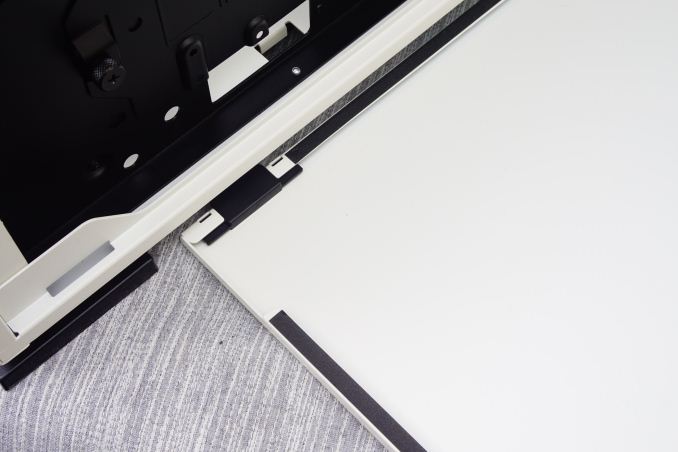
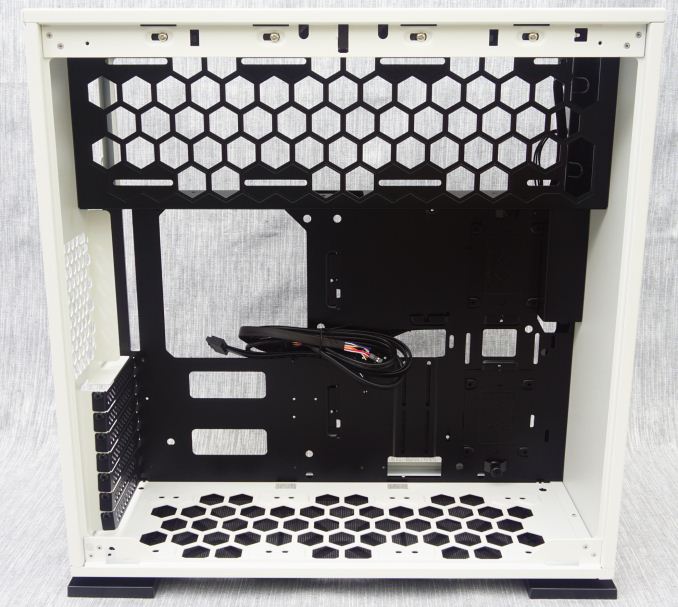
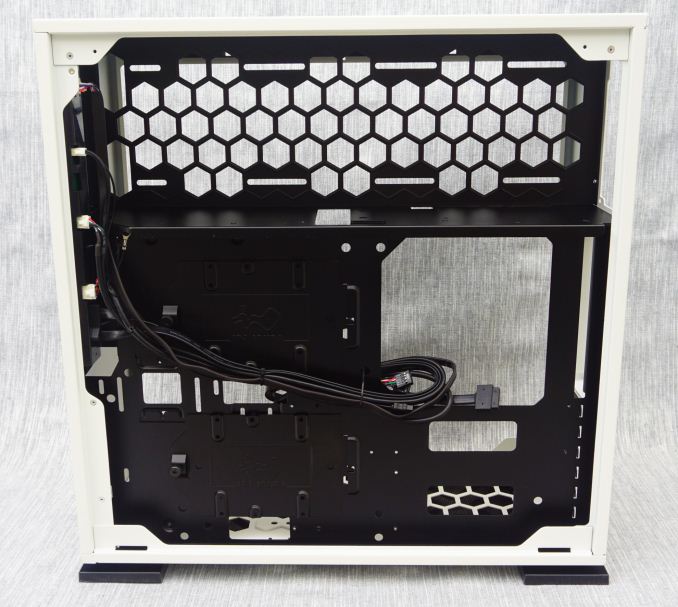
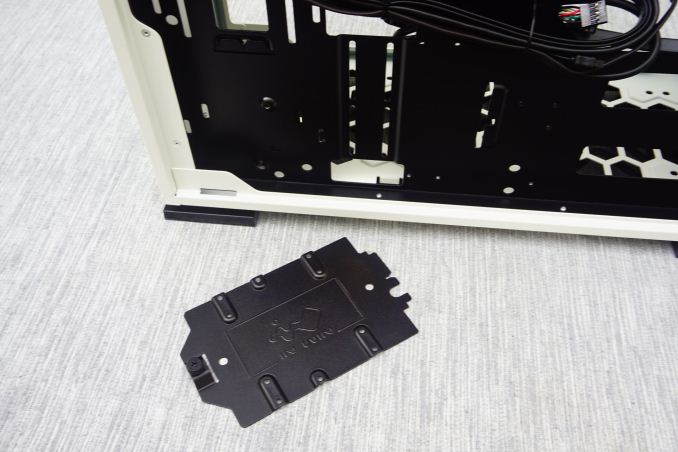
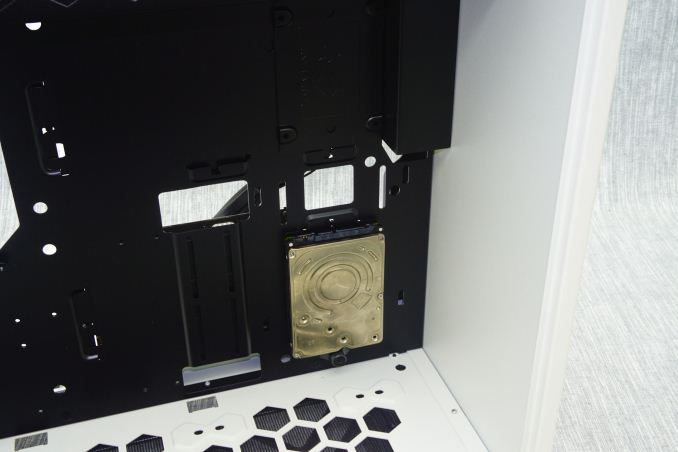

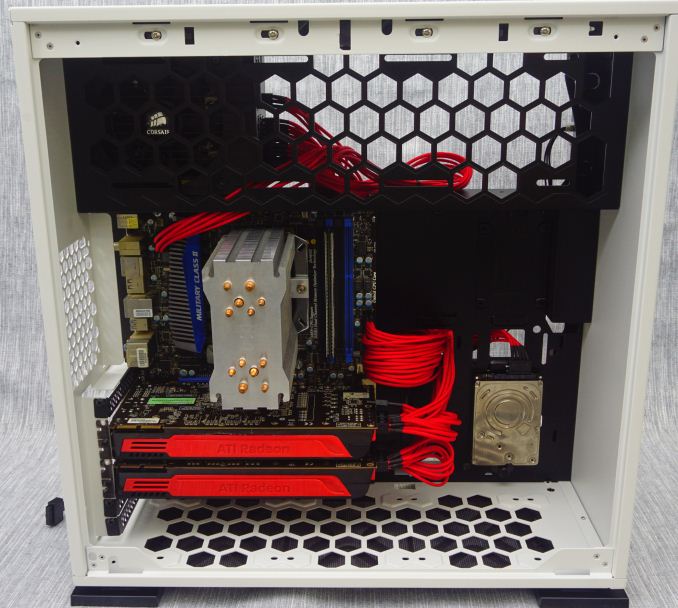
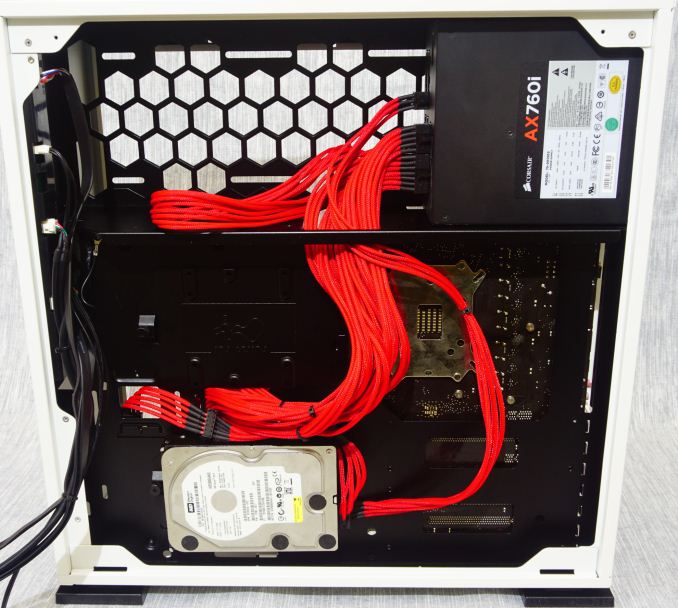








43 Comments
View All Comments
nagi603 - Thursday, October 13, 2016 - link
Well...not a fan of always-on LEDs. And the back design? Couldn't the back would have fitted a double 120mm rad / two 120mm fans if they added a few centimeters more to the width? That vented side won't allow for much airflow. (As it is reported by the graphs describing a poor thermal performance.)Plus, it almost looks beige.... D:
colonelclaw - Thursday, October 13, 2016 - link
I generally get at least 5 year's use out of a case, so if I was purchasing one right now I would have to insist on it having USB Type C. Other than that, it looks fine.3ogdy - Sunday, October 16, 2016 - link
Yeah, other than that, you'd be spending the next half a decade with a 3.6 decade old fridge in which components aren't even kept extremely cool (as in lower-than-ambient-temps cool)valinor89 - Friday, October 14, 2016 - link
Is it as beige as it looks on my work screen?Looks like an old tower with that color.
JohnMD1022 - Saturday, October 15, 2016 - link
No optical drive bay = no buy.3ogdy - Sunday, October 16, 2016 - link
I feel you. The thing is...some short while ago I was in the market for a BD-RW drive. I realized it's more expensive and bulkier to carry optical media with me (BD-RW discs, for instance). Plus, the transfer rates aren't exactly USB 3.0 / 3.1. Therefore, I'm sticking with my external Samsung DVD-RW drive I'm not even using...that is until I migrate entirely to external SSDs. I hate HDD reliability and shock resistance anyway.3ogdy - Sunday, October 16, 2016 - link
I'm really struggling to find the difference between this and a 1980s fridge such as this one:https://upload.wikimedia.org/wikipedia/commons/9/9...
Maybe the side where the handle lies, opposed to where the IN-WIN logo is put...also featuring colors from the same era's general color theme.
So, the question is, how cool can this hundred dollars fridge can keep my salami?
SeanJ76 - Monday, October 17, 2016 - link
Ugly and normalMembus - Wednesday, November 23, 2016 - link
Actually. The Black one is nicer looking by far. The one I'm thinking of buying. Just for the Glass/price.It's a shame the test wasn't done with some aftermarket fans although that is impressive that it's able to passively cool. People who read the article would know that the temps are with out any fans at all.
The lack of cable management kinda bothers me a little.
A custom loop in this thing would be very nice.